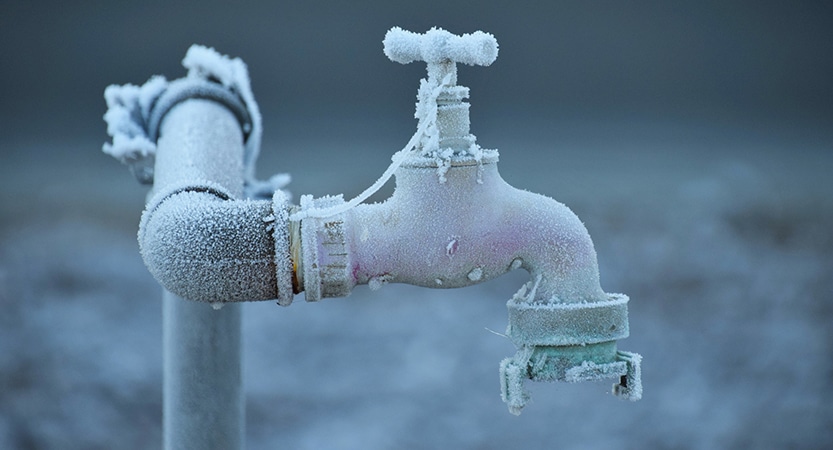This post below involving How To Avoid Freezing Pipes is unquestionably attention-grabbing. Don't skip it.

Winter can wreak havoc on your pipes, specifically by freezing pipes. Right here's how to avoid it from taking place and what to do if it does.
Intro
As temperature levels drop, the risk of frozen pipelines increases, potentially bring about expensive repair work and water damage. Recognizing exactly how to avoid icy pipelines is vital for property owners in cold environments.
Comprehending Icy Pipes
What causes pipes to freeze?
Pipes ice up when exposed to temperatures listed below 32 ° F (0 ° C) for expanded durations. As water inside the pipes freezes, it increases, taxing the pipe wall surfaces and possibly triggering them to burst.
Threats and damages
Icy pipes can result in supply of water disturbances, residential or commercial property damages, and costly repair work. Ruptured pipes can flooding homes and trigger extensive architectural damages.
Signs of Frozen Water Lines
Identifying frozen pipelines early can prevent them from bursting.
Just how to identify icy pipelines
Look for reduced water flow from taps, unusual smells or sounds from pipelines, and noticeable frost on exposed pipelines.
Prevention Tips
Insulating prone pipelines
Cover pipelines in insulation sleeves or make use of warmth tape to safeguard them from freezing temperature levels. Concentrate on pipes in unheated or exterior areas of the home.
Heating methods
Keep interior areas adequately heated, specifically areas with pipes. Open up closet doors to allow warm air to circulate around pipes under sinks.
Protecting Outdoor Pipes
Garden pipes and outdoor taps
Disconnect and drain garden pipes before wintertime. Set up frost-proof faucets or cover outdoor taps with protected caps.
What to Do If Your Pipes Freeze
Immediate actions to take
If you believe frozen pipes, maintain faucets available to ease pressure as the ice thaws. Utilize a hairdryer or towels taken in hot water to thaw pipelines slowly.
Long-Term Solutions
Architectural modifications
Think about rerouting pipelines away from exterior walls or unheated areas. Add additional insulation to attic rooms, cellars, and crawl spaces.
Updating insulation
Purchase high-grade insulation for pipes, attics, and wall surfaces. Appropriate insulation assists maintain consistent temperature levels and decreases the danger of icy pipelines.
Verdict
Protecting against icy pipes requires proactive steps and quick feedbacks. By recognizing the reasons, signs, and preventive measures, home owners can shield their plumbing throughout winter.
5 Ways to Prevent Frozen Pipes
Drain Outdoor Faucets and Disconnect Hoses
First, close the shut-off valve that controls the flow of water in the pipe to your outdoor faucet. Then, head outside to disconnect and drain your hose and open the outdoor faucet to allow the water to completely drain out of the line. Turn off the faucet when done. Finally, head back to the shut-off valve and drain the remaining water inside the pipe into a bucket or container. Additionally, if you have a home irrigation system, you should consider hiring an expert to clear the system of water each year.
Insulate Pipes
One of the best and most cost-effective methods for preventing frozen water pipes is to wrap your pipes with insulation. This is especially important for areas in your home that aren’t exposed to heat, such as an attic. We suggest using foam sleeves, which can typically be found at your local hardware store.
Keep Heat Running at 65
Your pipes are located inside your walls, and the temperature there is much colder than the rest of the house. To prevent your pipes from freezing, The Insurance Information Institute suggests that you keep your home heated to at least 65 degrees, even when traveling. You may want to invest in smart devices that can keep an eye on the temperature in your home while you’re away.
Leave Water Dripping
Moving water — even a small trickle — can prevent ice from forming inside your pipes. When freezing temps are imminent, start a drip of water from all faucets that serve exposed pipes. Leaving a few faucets running will also help relieve pressure inside the pipes and help prevent a rupture if the water inside freezes.
Open Cupboard Doors
Warm your kitchen and bathroom pipes by opening cupboards and vanities. You should also leave your interior doors ajar to help warm air circulate evenly throughout your home.

We were shown that editorial on Winter Plumbing Precautions: Preventing Frozen Pipes through a good friend on our other blog. If you liked our blog posting if you please remember to share it. Thanks a lot for your time invested reading it.
Call Today
Comments on “Avoiding Frozen Pipes in Winter: Essential Advice”